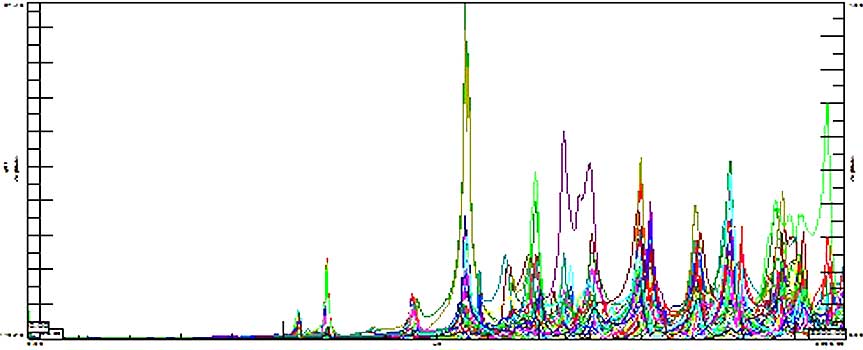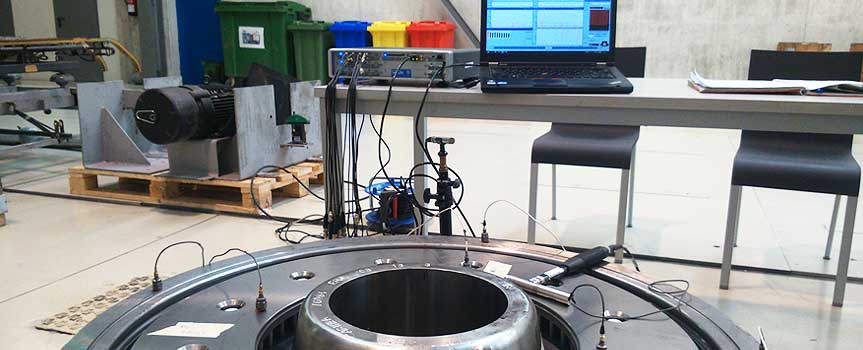CETEST offers on-track and laboratory modal analysis testing.
Modal analysis testing uses the most appropriate techniques or those which comply with specific requirements to determine the natural frequencies, vibration modes and shapes of components and/or vehicles.
We perform Experimental Modal Analysis (EMA). This involves applying a known excitation to the component being studied by means of an instrumented hammer, shakers or through the relaxation method. This analysis is best-suited to elements of reduced dimensions or which present a low damping ratio.
We also perform Operational Modal Analysis (OMA) and Operational Modal Analysis in presence of eXogenous inputs (OMAX),
where the system is studied in normal operation conditions and it is assumed that the excitation received can be modelled as white noise. This analysis is recommended for elements of large dimensions in which the ambient excitation is constant in the frequency range being studied, such as railway bridges.
Finally, at CETEST we have developed a new method for obtaining the modal parameters of railway vehicles through on-track measurements (on-track modal analysis for railway vehicles). It identifies both the rigid solid modes associated with the suspension as well as the structural modes. The technique developed takes wheel-track interactions into account, a key component in railway dynamics that cannot be considered using other methods. Furthermore, the developed method is based around simple instrumentation and can be performed in parallel with other on-track tests, reducing overall test costs to a minimum.





